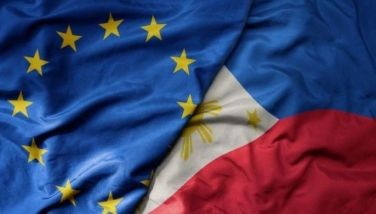Phl cigar industry is slowly rolling back to its old glory
MANILA, Philippines - One rule about cigars: Don’t equate them with cigarettes. They are worlds apart.
For American expat Rusty Ferguson, who moved to Cebu in 2008, one of his reasons for retiring in the Philippines is not just the beaches and English being the lingua franca, among others – but also the cigars.
“The quality compares and, to some, exceeds those made in Cuba,” the native of the American south attests in his blog (www.cebuexperience.com), which encourages foreigners to retire in the Philippines. “I wish they were not so good and so fun to smoke.” Ferguson’s Facebook photo shows him puffing like a don.
Another reason is the cost. A Philippine cigar burns a fraction of your pocket compared to the price of a typical Cuban stogie. Ferguson’s brand of choice? Those made by Tabaqueria de Filipinas Inc., which he hails as “one of the jewels of the Philippines.”
Tabaqueria supplies cigars to 25 foreign brands, according to Roman Ripoll, the company’s sales and marketing manager. “The world sees us as a tobacco-growing country, not as a cigar producer. And now, slowly, we are being known as a cigar producer.”
There was a time, from the Spanish colonial era till the end of World War II, when the Philippines was known for cigar excellence. The Spaniards introduced tobacco in 1592 via the Manila-Acapulco galleon trade. By the 1700s, Philippine-made cigars were being toasted in Europe’s smoking salons.
In 1782, the Spanish colonial government introduced a tobacco monopoly to make money off the Filipinos, for whom cigars were a way of life – just as smoking is today. Native resentment forced the abolition of the monopoly in 1881.
“Do you know how many cigars were sold before the war? Over 200 million cigars a year were exported throughout the world. Of course, the domestic market was huge itself. Everybody was smoking cigars,” relates Ripoll’s father, Gabriel Ripoll Jr., age 69, who founded Tabaqueria in 1993. “But this was before cigarettes were in fashion. The cigarette was the worst thing that ever happened to the cigar industry.”
Changing lifestyles, people’s purchasing power and the nicotine addiction prompted the shift to cigarettes. A corona cigar costs about P80, more expensive than a pack of cigarettes. Also, life in the fast lane today doesn’t give you plenty of time to savor a smoke.
The Philippine cigar became a distant memory after the decline even though tobacco has been a major Philippine crop since the Spanish colonial period. Thanks to former president Fidel Ramos’s cigar chomping during his term (1992-1998), Filipinos were reminded that the tabako formed part of the national heritage.
Aside from Filipino historical awareness, Tabaqueria is also dependent on tourism and foreigners. A case in point is Club Paradise, a picturesque white sand beach resort on Dimakya Island, north of Palawan. A humidor containing Philippine cigars is prominently displayed at the bar. Bar tenders there say most of their cigar buyers are mostly European, Japanese, Korean and Chinese tourists. Filipinos rarely buy cigars.
But there have been changes lately. “Nationalism is present, absolutely,” Ripoll says of Tabaqueria’s growing local sales. Filipinos buy cigars often for other reasons, however. “One, probably because they are curious. Two, they probably don’t want to smoke cigarettes anymore.”
Sales have been growing by 20 percent since Tabaqueria started with only five cigar rollers in 1993. Their total output for the year was 100,000 cigars. Today, with an employee strength of 350, the annual output is five million cigars.
But all that may be endangered by the renewed campaign of the Metropolitan Manila Development Authority against smoking in public.
His son, Roman the sales manager, predicts that they may shut down if the restrictions make doing business almost impossible. That would mean throwing people out of work. Roman points out that Tabaqueria’s plantation in La Union province had spawned a farming community complete with a school, small hospital and a church.
“I see the handwriting on the wall as far as tobacco is concerned. It will never be banned like marijuana, but the smoking restrictions will get tighter and tighter,” says Roman’s father, the elder Gabriel. “It’s sad, but I can see that – unless something dramatic happens.”
Roman feels it’s a waste because of the heritage. He holds a mini cigar exhibit whenever the Kultura Pilipino souvenir store holds outdoor sales at SM malls. A crowd would gather mesmerized as a torcedora (“female cigar maker” in Spanish), in an 1898-period dress, skillfully rolled tobacco leaves into cigars with consistent quality by hand. Cigars are made by hand, by the way.
“The reason why we do exhibits is to let our fellow Filipinos know that cigar-making is ours,” Roman emphasizes. “It is in our heritage.”
- Latest






























